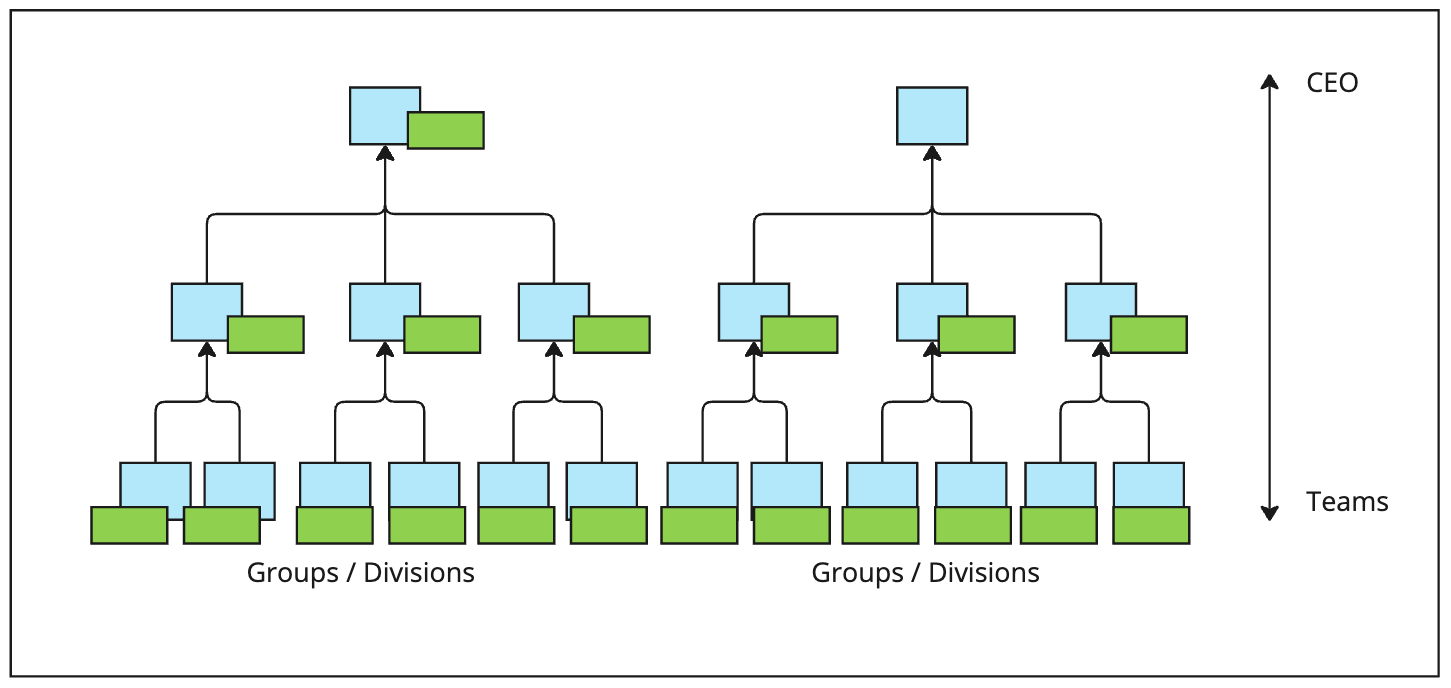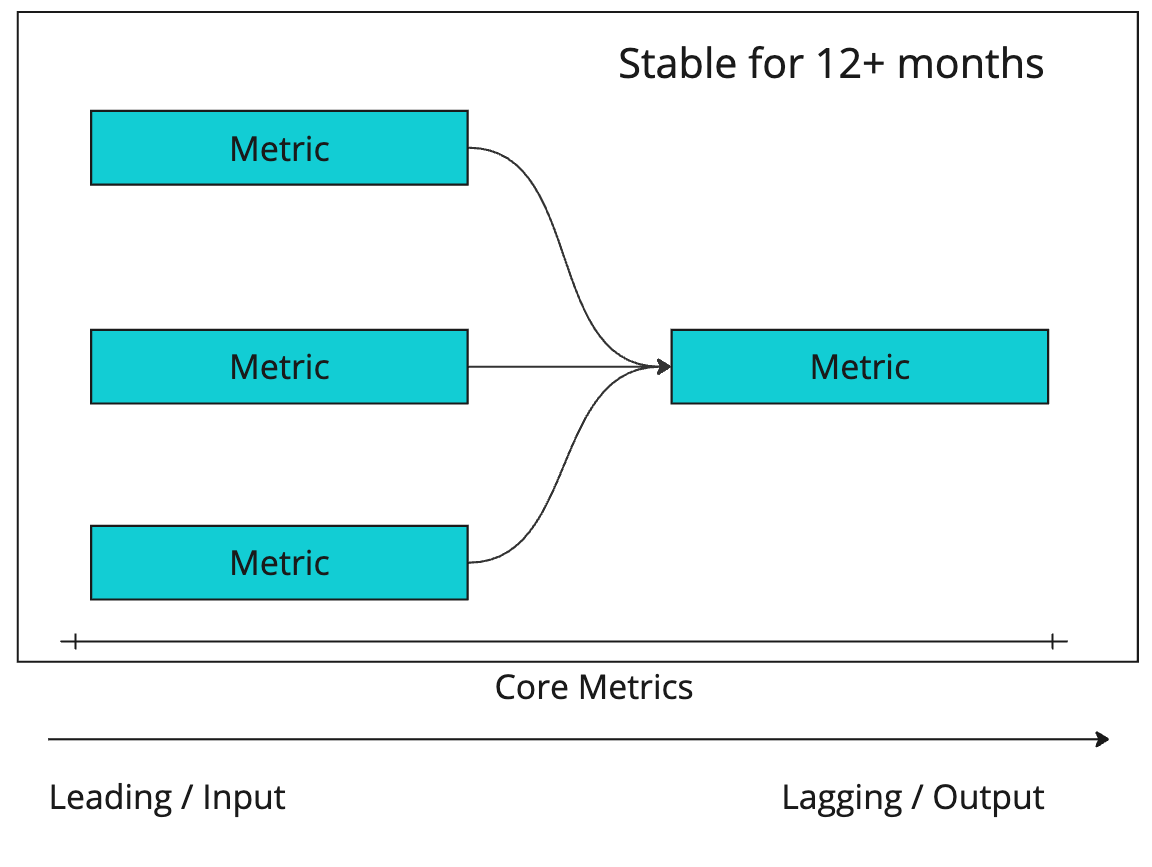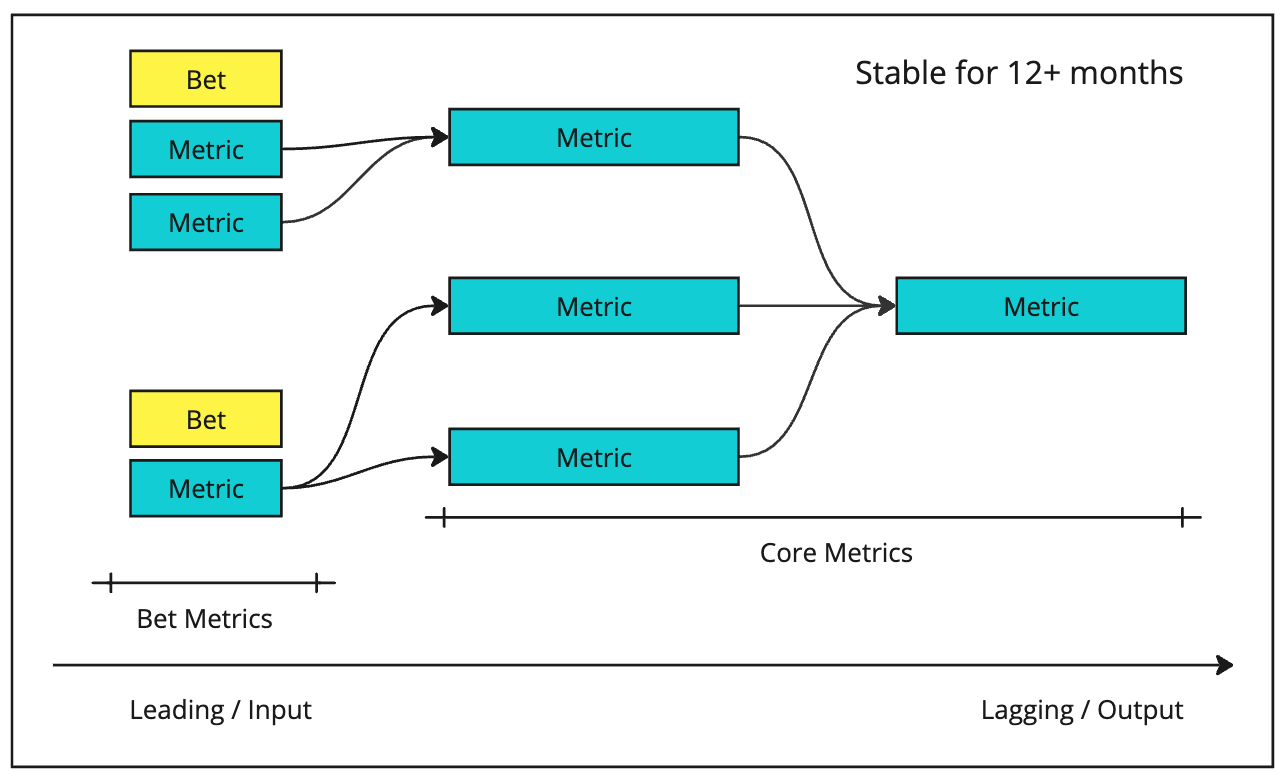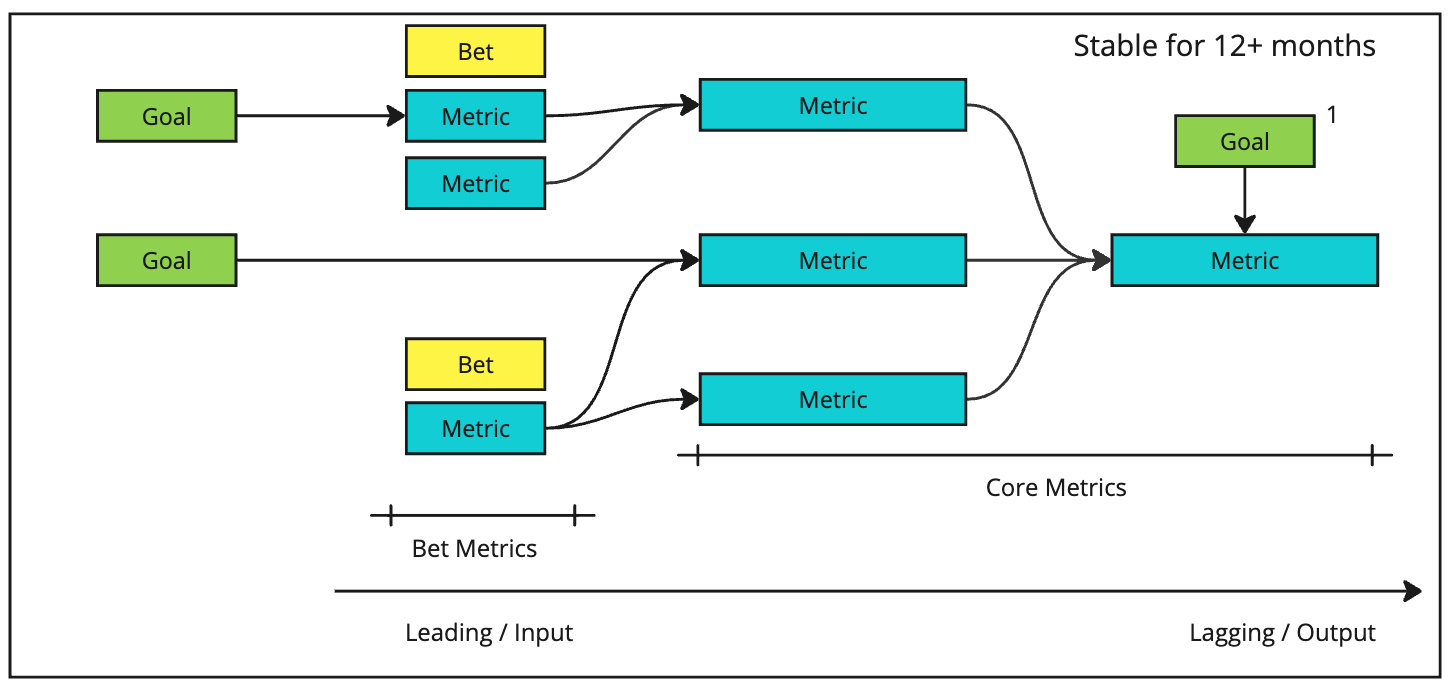
Metadata
- Author: John Cutler
- Full Title:: TBM 305: Stop the (Goal) Cascade Madness
- Category:: 🗞️Articles
- Document Tags:: Data Team Vision And Mission, Prioritization Techniques,
- URL:: https://cutlefish.substack.com/p/tbm-305-stop-the-goal-cascade-madness
- Finished date:: 2024-08-09
Highlights
Bets—insert whatever word you use in your company, e.g., initiatives, opportunities, or “projects”—often involve unique metrics that are more ephemeral (short-lived). We use these metrics to determine if the thing is working as expected and having the intended local impact. We also typically want to figure out if these things positively or negatively influence our core metrics (this is important because while bets are transient, these metrics are more stable). Add/remove these metrics as needed, and remove them when you’re tired of looking at them and they’ve outworn their usefulness. (View Highlight)
Teams should set goals using 1) a core metric, 2) a bet metric, or 3) some feasible input into #1 or #2. (View Highlight)
Quarterly goal-setting should be routine and easy because 80%+ of the metrics you set your goals on are already in use. An actual strategy doesn’t shift that quickly. (View Highlight)
many cases, goal cascades are literally “org chart cascades,” nothing more, nothing less.
This orientation would be fine if there were some kind of fundamental causal model or framework underpinning the goals that just happened to mimic the org chart. (View Highlight)
You only have two real levels: • Level 1: High-level lagging things that matter for the business as a whole and high-level guardrails that matter for the business as a whole • Level 2: Stable core metrics, bet metrics, etc. on the team level (View Highlight)
 (
( (
( (
(